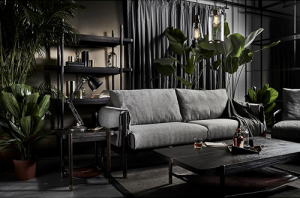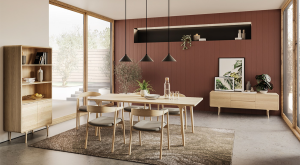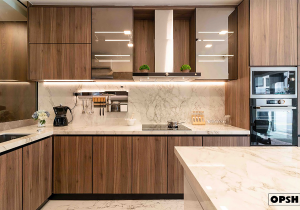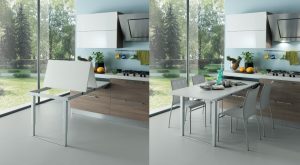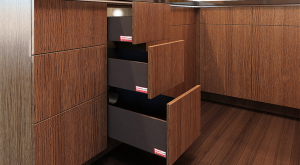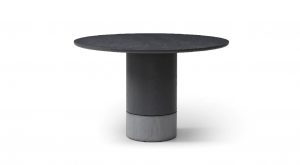An Enzo Mari Memorandum
Enzo Mari, a legendary designer known for his communist and idealistic beliefs as much as his caustic tongue and his designs, has inspired many generations of designers the world over. His recent passing on has brought about a renewed interest in his works and more importantly, his design philosophies. We pay our tribute here with a piece remembering this remarkable designer.
In Italian, the name Enzo means a winner.
Born into a poor peasant family, whereby his parents spent their lives struggling to bring in the dough, Enzo Mari was not born a winner, and spent his adult life as a curmudgeon and an advocate of communism, his ideals often expressed indirectly through his designs and directly through his unembellished words.

As much as his design, Enzo Mari was known for his unapologetic way of speaking, often calling a spade a spade; it takes not only guts to call out the truth, but also a sense of idealism, of making and advocating – in his own words, regardless of what the rest of the world thinks – only worthy designs. When world renowned Dutch architect Rem Koolhaas attended his public lecture at the Serpentine Gallery in London, Mari unabashedly denounced him as a “pornographic window dresser” in front of the whole audience. For those who had seen how Koolhaas had often scorned adoring fans in his lectures, refusing any questions deemed below him, Mari had served a sweet revenge for all, and probably nobody else would dare to say that to Koolhaas. Perhaps cynicism perhaps nihilism, Mari had also often declared that “design is dead”, but this has turned out to be prophetic today with so many crowd-sourced platforms like Fivver, Upwork, Guru, etc where designers are selling their services for cheap. This has disrupted the eco-system of the design industry both locally and globally, and it is pushing down the fees for many design firms the world over. With prices becoming lower and lower, and designers fighting for survival, design – or rather, designers – might eventually really be dead, and we will all become simply service providers, driving the practice of design beyond service to the grave.
The idealism of Mari’s work probably stemmed from his inclination towards communism, perhaps my favourite work of his is his book Autoprogettazione (Self-Designs), consisting of technical drawings to enable the reader to create his own furniture with nothing more than a saw, a hammer, nails and wood planks – almost like a manifesto in more ways than one. Allowing everyone to own a piece of his design at minimal costs; besides being in line with his communistic beliefs, this book put the designer at the same level as his reader – both becoming simply makers of furniture – removing the designer ego in this act and a slap in the face of those designers whom he considered with scorn as “publicity whores”, whose public images overshadow their work only to make money. As Hans Ulrich Obrist said of Mari, “The idea of access to great design is always at the core of his work, as well as how this access can positively affect our relationship to objects.”
Unlike his peer Achille Castiglioni whose name is synonymous with the iconic Arco lamp, Mari’s design portfolio is diverse and full of surprises and it is perhaps deliberate that this cynical designer did not want to leave behind any iconic pieces, as that would have been too whorish an act by his belief that design should first and foremost serve, and not flaunt. Hence, perhaps it comes as no surprise that if one has to pick the most iconic piece of work by Mari, it is a set of toys he designed for children – 16 Animali for Danese Milano, 1957 – one of his earlier works, consisting of different animal blocks carve out from one piece of solid wood. This set of wooden animal toys encompass his philosophy – affordability, equality, simplicity – factors that are more important to him than the form itself. The form of an object is often a by-product of the message he wants to convey, design becomes the medium in which he makes his commentary of the society. The symbolic aspect of his design is often as important as the functional aspect of it. In fact, the often very functional nature of his design is itself a statement against mindless mass production of objects which he termed as “merchandise” in a negative light, but he believes in designing object that is as much affordable and accessible in price and usability to the consumers as much as he believes in the buildability and integrity in the production process that emphasises an equal joy for the maker and the end-user. While he is fully aware that his egalitarian principles are idealistic and not fully realistic in practice, he stands by these ideals as his way of putting forth his utopian view of what design should be, or should mean.

The pursuit of form was never the intent of his design, but what he pursues is the art of the design, and the end result of the form a natural derivation of the concept and production process. To quote Mari in his criticism for the commercialisation of many designs at the expense of the artistry in it, “It is pure mannerism to encrust objects. As long as something is produced, it has to be sold, it is merchandise.”
In 2008, when Galleria d’Art Moderna (Civic Gallery of Modern and Contemporary Art) in Turin dedicated an extensive anthological exhibition to Enzo Mari, he deliberately chose not to distinct between his art and his products, they are all arranged in a fluid manner, to make a clear statement that they are all but the same, grounded by his ideals and philosophies as an artist and designer. The central piece of the exhibition is “44 evaluations’ / 44 sculptures” a series of 44 marble sculptures that look like abstract forms individually, but they can be pieced together to be recomposed into the sickle and hammer motif. Conceptualised to be pieces of a puzzle that are meant to be reassembled for the ideology to reveal, a message much like his exhibition – whereby any single piece of his works will not do justice to his design philosophy, but when his body of works is view in its entirety, one starts to see the clarity of his pursuits, thoughts and mission as a designer and an artist.
Perhaps Muji’s exhibition on Mari in 2019 best summarises his vision and mission as a designer, titled “To change. Enzo Mari and the Chestnut Tree Project”, the exhibition showcased not only a vast collection of Mari’s works, it also featured 19 pieces of tables and chairs that Mari designed for Muji, but were never produced commercially. This series of furniture embodies the lifelong belief of Mari as a designer – that a designer should not design for the sake of making money but for the good of making people’s lives better, to quote him:
“In the past, design played a role to invent an outstanding standard in the name of equality. However, following a period of drastic economic growth, it has now been degraded to a simple means to sell merchandise. At present I feel rather ashamed to be a designer. Here I would like to propose a long-term project to go forward towards the future: it isn’t for financial gain in the short term, but is more like planting chestnut trees to nourish people with their fruit, and to let them relax under their shade. I believe that companies should have this kind of viewpoint”.
If only we have more designers who think and work like Mari, perhaps design could really make the world a much better place for all.
RIP Enzo Mari, you shall be remembered for your brains and balls.
[By Kelley Cheng, Illustration: The Press Room]
30 January 2021


